Last updated on March 9th, 2023 at 07:11 pm
Digital marketing is continuously on the increase, and so are customers’ expectations of personalized digital interactions aimed at their specific needs.
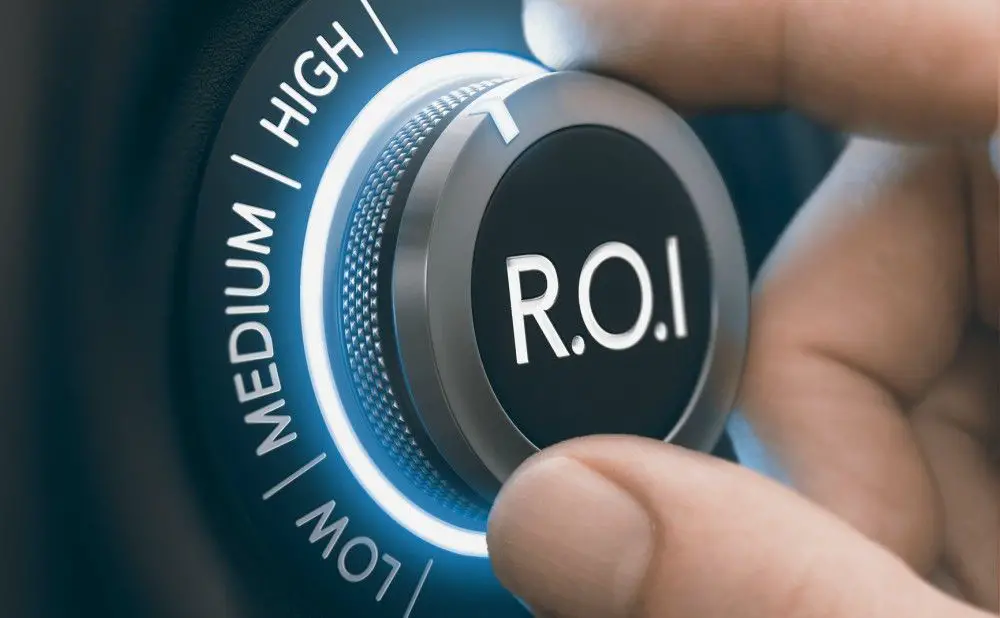
Understanding how to measure and improve digital marketing ROI has become more crucial.
Currently, to meet those expectations, 98% of CMOs now combine their traditional and digital marketing efforts, including key technology investments in the areas of social marketing and digital commerce.
Irrespective of the digital technologies deployed, generating revenue remains fundamental for any business. This suggests that marketers need easy ways of determining if their efforts are generating revenue.
Understanding what to how to measure and improve your digital marketing ROI is the first step to achieving this objective.
Return on investment (ROI) in digital marketing “measures the efficiency of marketing effort to certain key performance indicators.”
In this article, I’d be sharing how you can measure and improve your digital marketing ROI.
See Also: How To Increase Sales Volume With Digital Marketing
How to Measure Digital Marketing ROI
Below are digital marketing ROI to look out for and how to measure and improve them.
1. Conversion Rate
A conversion is regarded as an event that is tracked and recorded when a campaign goal or interaction is complete.
Conversion rate is regarded as the percentage of website visitors that completed your set goal (a conversion) to the total number of people that could have converted.
In digital (online) marketing, your conversion rate does not just equate to sales. It can be the number of downloads or the number of people who subscribed to your mailing list.

By Calculation, the conversion rate is the number of conversions divided by the total number of visitors. For instance, if an eCommerce site receives 2000 website visitors in a month and has 500 sales, the conversion rate would be 500 divided by 2000, or 25%.
A high conversion rate implies that the digital marketing campaign was successful.
See Also: How to Start a Profitable Mini Importation Business in Nigeria
2. Cost Per Acquisition (CPA)
Cost per acquisition (CPA) in digital marketing is the total measure of how much it costs an advertiser to acquire one paying customer.
It is used when evaluating campaign outcomes as it lets the digital marketer understand which digital channel, vendor, or ad is driving the most cost-efficient performance.
While the conversion rate is useful to understand what has been effective at converting your target audience, the CPA provides an in-depth understanding of cost-efficiency.
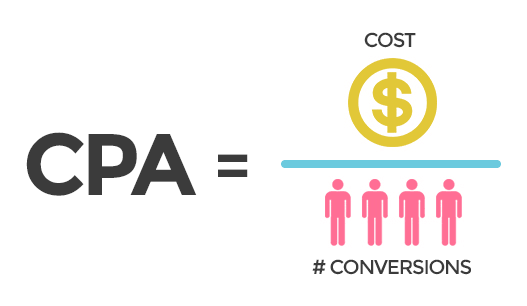
By Calculation, the conversion rate is the Total Cost divided by Conversion. For instance, if you have spent NGN 50,000 on Facebook Ads and it has driven 50 conversions, then your CPA would be NGN 10,000.
Once you define the CPA for all vendors, the targeting within each vendor, and which ads are performing the strongest, you can then, at a very granular level, optimize your campaign spend effectively to ensure you are getting the most efficient performance out of the budget spent.
See Also: How To Target Wealthy Individuals With Facebook Ads
3. Customer Lifetime Value (CLTV)
Customer lifetime value (CLTV) is one of the most vital metrics to track at any growing company.
CLTV is the total worth a customer is to a business over the entire period of their relationship. It’s an important metric to consider in every digital marketing strategy.
Remember that it costs less to keep existing customers than it does to acquire new customers. Hence increasing the value of your existing customers is a great way to drive business growth.
If the CLTV of an average coffee shop customer is NGN 10,000 and it costs more than NGN 10,000 to acquire a new customer (advertising, marketing, offers, etc.) the coffee shop could be losing money unless it pares back its acquisition costs.
By Calculation, CLTV = (average value of the purchase) X (number of times the customer will buy each year) X (average length of the customer relationship in years)
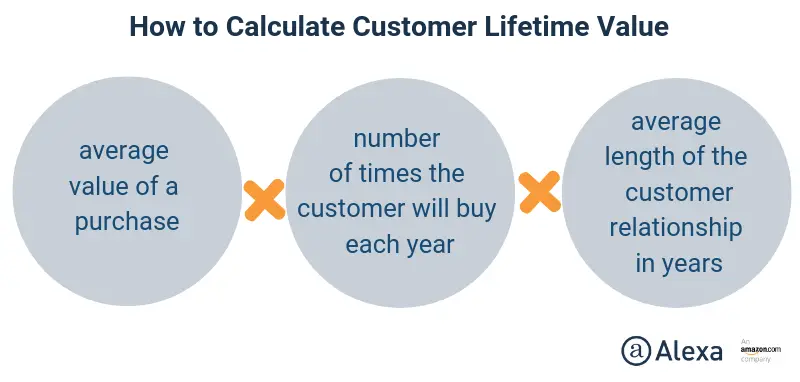
When you know your customer lifetime value, you can improve it to grow your business.
4. Revenue on Ad Spend (ROAS)
In the simplest form, Return On Ad Spend (ROAS) is a marketing metric that measures the amount of revenue your business earns for each dollar it spends on advertising.
ROAS helps businesses evaluate which digital strategies are working and how they can improve future advertising efforts.
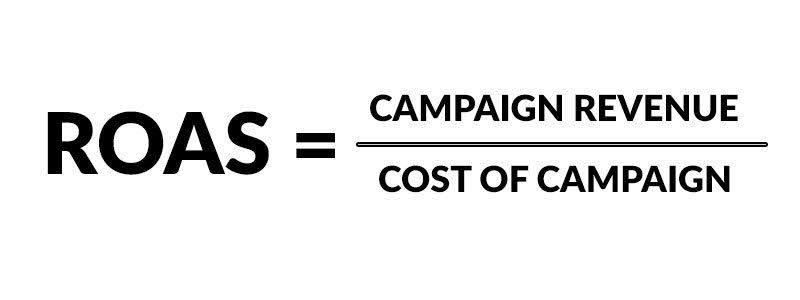
By calculation, it is a percentage of revenue generated divided by the total amount spent in the campaign. For example, a company spends NGN 200,000 on an online advertising campaign in a single month.
In this month, the campaign results in revenue of NGN1,000,000. Therefore, the ROAS is a ratio of 5 to 1 (or 500 percent) as NGN1,000,000 divided by NGN200,000 = NGN 5.
The higher your ROAS, the better!
5. Lead Close Rate
Lead conversion rate monitors the percentage of your leads that end up converting to a sale.
This metric offers your company valuable insight into how well they are at converting leads into real-time sales.
To calculate the lead conversion rate, you compare the number of leads converted to opportunities in a period, with the total number of leads generated.
For example, if you had 1000 leads that were created in December, and you had 180 leads converted to opportunities in March, then your lead conversion rate would be 180 / 1000 = 18%.
It is very necessary to monitor the number of leads that eventually turns out to be sales.
What then after you track and measure your digital marketing campaign ROI?
- Identify and define your goals early on
- Use KPIs that are in direct alignment with your goals
- Test different targeting, offers creative, frequency, and messaging.
- Identify and seize vital opportunities for improvement
See also: 25 Smart Instagram Marketing Strategy that Actually Works
ROI Using Digital Marketing Tactics
Discussed above are some general metrics that you can use to evaluate the ROI of your marketing campaigns.
However, it’s necessary to note that the metrics you use to measure your campaigns will ultimately depend on which strategy you are using in your campaigns.
The metrics that you use to evaluate email marketing ROI are not the same as those you might use for social media campaigns.
Always bear in mind that, the metrics that you use to measure and improve ROI on different digital marketing channels are informed by your campaign goals and objectives.
With that in mind, here is a quick list of metrics that you can use to measure and also insight on how to improve digital marketing ROI based on your strategy:
- Email – Click-through rate, bounce rate, open rate, conversions, unsubscribe rate, and leads acquired.
- Social Media – Engagement rates, conversions, leads acquired, clicks and click-through rate, and new fans or followers.
- Landing Pages – Traffic, unique visitors, total page views, returning visitors, time spent on a page, actions taken, and conversions.
- Blogs – Traffic, clicks, unique visitors, returning visitors, time spent on a page, actions taken, and conversions.
4 Ways to Improve Your Digital Marketing ROI
Once you start evaluating your digital marketing ROI, the insights will inspire you on key areas to improve. Highlighted below are a few tips for improving your ability to both measure ROI and boost your company’s bottom line:
1. Identify and Define your Goals Early On
As we categorically stated above in the ROI measurement section, you need to know what the goals of your campaign are before you can begin to measure and improve digital marketing ROI. If your goals are unclear, then there’s a greater possibility that you might not be deploying accurate metrics to monitor your ROI.
Conventionally, the first step in measuring and improving your digital marketing return on investment is identifying clear goals that allow you to achieve objective results.
Avoid hazy and loosely defined goals. A good example is “increase awareness” or “create more conversions.” Rather, make sure that your goals are SMART – specific, measurable, achievable, relevant, and time-bound.
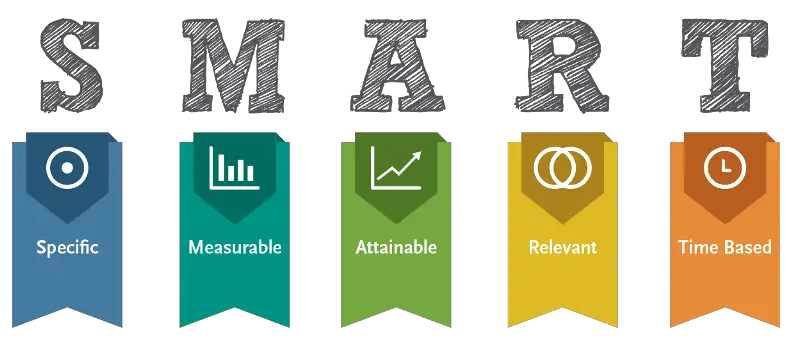
Ensure that all the goals you set for digital marketing are SMART.
It is fine to start with a vague goal and then make it SMARTer. For example, let’s say that your goal for a given campaign is to increase website traffic. You need to make it specific and measurable as much as you can.
For Instance– if converting 30% of email subscribers into clients is your campaign goal. Then, you need to set a time frame. Hence, adding a timeline like “in the quarter (Q) 2” or “in 9 months” ensures you have an objective to complete your goal.
As for attainable and relevant, this depends on your particular campaign. Ensure that you are choosing a measurement that’s achievable in the time frame you’ve set out yourself.
Also, make sure that whatever goal you’ve chosen is relevant and in sync with your overall objectives and the digital marketing campaign in progress.
Developing SMART goals for each campaign before you implement the strategy is a great way to make sure you’re on the right track for success. Without clearly defined goals in place, you won’t be able to measure your ROI properly. And if you can’t measure ROI then you can’t find ways to improve it.
See Also: 20 Free Online Tools to Boost Productivity and Efficiency
2. Use KPIs that are in direct alignment with your goals
KPIs, or key performance indicators, are the quantifiable metrics or ways that you track and measure your progress. The most important part of setting a KPI is defining what to evaluate.
Once you have clearly defined goals, you need to ensure that you’re choosing KPIs that align with it. KPIs for SEO will be different from KPIs for content marketing or social ads. If you don’t have KPIs in place, you have no way of knowing the impact of your effort and strategy on your goals as well as how close you are to reaching these goals.
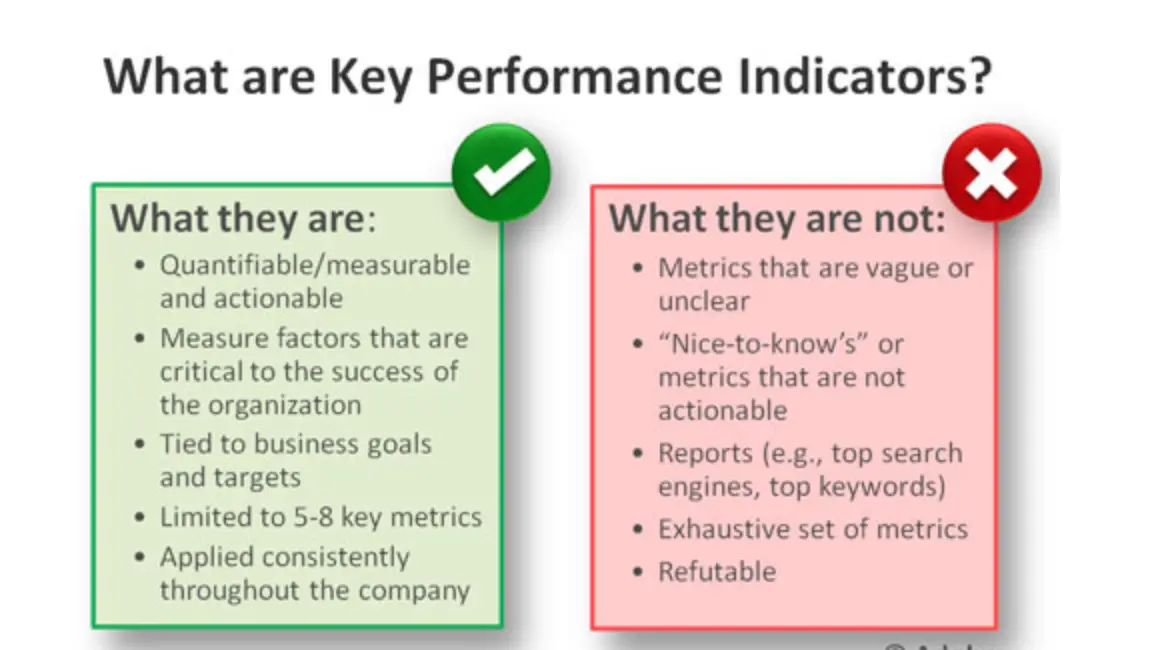
When developing your digital marketing KPIs, be sure to keep the following in mind.
Make sure that the KPIs you choose to align with the goals you’ve defined. For instance, if your goal is to increase conversions, you might as well use metrics that deal with sales in your approach to tracking progress toward these conversion-focused goals.
By using KPIs to measure progress, you’ll also be able to see how well you are getting to achieving your goals.
KPIs not only help you measure progress toward your campaign goals. But they also allow you to establish clear expectations for your marketing team.
With KPIs in place, you can avoid any miscommunication or misunderstanding about what your goals are. It also helps your marketing team to know exactly how campaign success will be determined. And help them in finding ways to improve these metrics.
3. Test Different Targeting, Offers, Creative, Frequency, and Messaging
Testing is a key aspect of improving your digital marketing ROI.
Test, Test, and Test Again!
This does not only help you improve the performance of individual digital marketing campaigns. But it can also offer you new insights that can be applied to your broader digital marketing strategy.
Also, the only way to discover which elements of your digital marketing campaigns are impacting your success is to test. There is no aspect of digital marketing that cannot be tested.
You can run A/B tests on different areas of your digital marketing campaigns to know which elements deliver the best performance. From email marketing to social media content to PPC ads, every part of your campaigns can benefit from thorough testing.
You must only choose one element of your campaign to test when you perform A/B test. For example, if you’re testing a creative, you might start with a single image. Change the copy for the creative (say video) in one test version and keep the other the same. Then, run each test to see which performs the best.
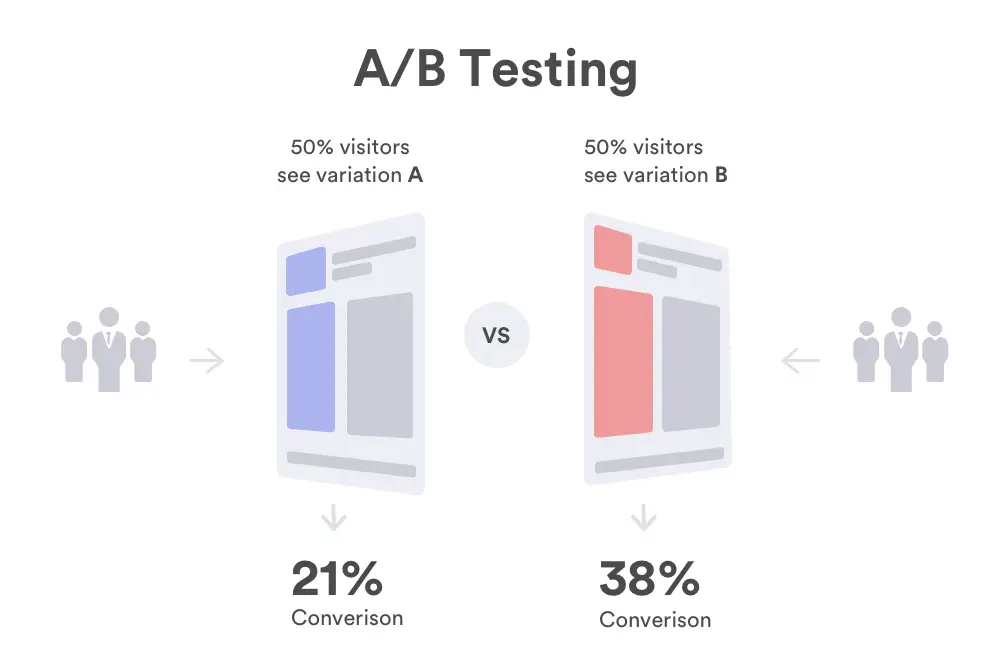
Only change one element at a time so that you know which variable is impacting performance when performing the A/B test.
Once you discover which elements of your campaigns delivered the best performance, you can then deploy strategic changes to both existing and future marketing campaigns.
You can implement changes to different campaigns across the board. This is not limited to only the same kinds of the campaign.
For example, let’s say that you find a certain type of messaging resonates best with your email marketing.
You might then not only make changes to your email marketing campaign messaging, but also carry these changes across to other elements of your digital marketing such as PPC ads or Facebook ads.
See Also: How to Generate Leads as a Real Estate Agent in Nigeria
4. Identify and Seize Vital Opportunities for Improvement.
Tracking your chosen metrics over time is not just enough. If you want to improve ROI, adjusting your campaigns based on what you find is vital.
The data generated is not the most important aspect of your digital marketing campaign measurements. Rather, these essential insights are acquired by looking at and analyzing this data generated will help you grow your brand.
Once you’ve done some experimenting and have continued to track metrics over time, you will begin to notice some trends or areas of opportunity.
Hence, you must seize these opportunities to improve. Perform new tests based on what you find to continuously discover new ways to make your campaigns even better.
For instance, let’s say that you are using conversions by the device as one of your metrics. In tracking this metric over time, you find that certain demographics of your population, such as younger age groups, prefer using mobile devices.
Sequel to that insight, if you want to improve ROI by boosting conversions on these devices, you might consider tailoring your messaging and offers on mobile campaigns to appeal to this segment of your target population.
Furthermore, other factors you might look at when analyzing your data and looking for new opportunities in the different channels that you’re using for campaigns.
And also, the time of day or day of the week that people tend to engage and convert. With these vital elements monitored, it will help you better optimize when you publish content marketing or launch ads as part of your digital marketing campaigns.
Conclusion
As you can see there are lots of benefits with effective Digital Marketing ROI measurement. You won’t get it right every time. However, the only way to improve your digital marketing campaigns is to know where you stand with your existing campaign.
Remember that the metrics you use in measuring your ROI will greatly depend on your goals and the channel. And make sure that your goals are SMART- Specific, Measurable, Attainable, Realistic, and Time-bound.
We hope you’ve found this article helpful.
If you need help or guidance in improving your digital marketing, simply Contact Us. We’d be happy to assist.
 PrimeGate Digital is a Result Driven Blog that strives to go beyond ‘Conventional Digital Marketing’ through digital innovation and performance marketing. We have experience working with world class brands and products.
PrimeGate Digital is a Result Driven Blog that strives to go beyond ‘Conventional Digital Marketing’ through digital innovation and performance marketing. We have experience working with world class brands and products.

8 thoughts on “How Businesses Can Measure And Improve Digital Marketing ROI”
Comments are closed.